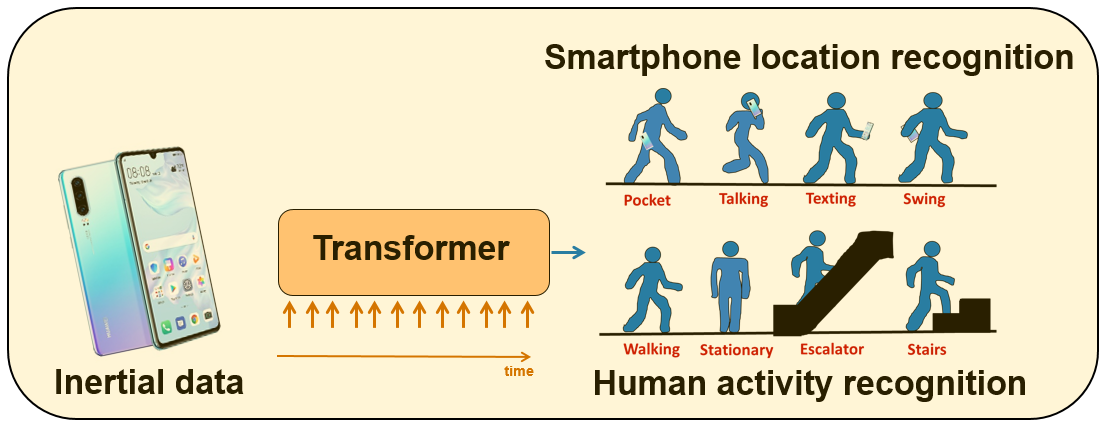Inertial-based Activity Recognition with Transformers
This repository provide the official PyTorch implementation of the method described in the paper: "Boosting Inertial-based Human Activity Recognition with Transformers" (Shavit and Klein, 2021, IEEE Open Access).
We propose a general framework for inertial-based activity recognition with Transformers. Samples collected over time with inertial sensors on mobile devices are provided to a Transformer Encoder architecture for learning smartphone location recognition (SLR) and human activity recognition (HAR) tasks.
The proposed approach is the first to employ Transformers for this task and is shown to provide a consistent improvement, across multiple datasets and scenarios.
Our model architecture (IMU-Transformer) is shown below:
Training and Testing for Intertial-based Activity Recognition
This repository supports training and testing of deep learning models for inertial-based activity recognition. Specifically, these models take IMU data and classify the type of activity. We support two models:
- A Transformer-based classifier (IMU-Transformer)
- A CNN-based (IMU-CNN) classifier, provided for comparison purposes
The entry point to our framework is the script main.py
The frameworks takes in a .csv file, where each row includes a single sample and its associated class.
The samples are then aggregated according to the window size specified in the configuration file.
In order to train a model run:
main.py train <path to labels file>
During training, the models and log file will be saved to a dedicated output folder (created if does not exist)
In order to test a trained model:
main.py train <path to imu dataset .csv file> --checkpoint_path <path to your model>
To see the full options, run:
main.py -h
The different hyper-parameters, including whether to run the Transformer/CNN architectures are controlled by
the configuration file (config.json)
Configuration Parameters
| Parameter Name | Description |
|---|---|
| n_freq_print | How often to print the loss to the log file |
| n_freq_checkpoint | How often to save a checkpoint |
| n_workers | Number of workers |
| device_id | The identifier of the torch device (e.g., cuda:0) |
| input_dim | The dimension of the input IMU data, e.g., 6 when using accelerometers and gyros |
| window_size | The size of the time window (i.e. how many samples in a window) |
| num_classes | Number of classes |
| window_shift | The window shift, put here the window_size to avoid window overlap |
| use_baseline | Whether to use the CNN-baseline or not (setting this to False will train the Transformer-based model) |
| encode_position | Whether to encode positions for IMU-Transformer |
| transformer_dim | The latent dimension of the Transformer Encoder |
| nhead | Number of heads for the MHA operation |
| num_encoder_layers | Number of encoder layers (Transformer) |
| dim_feedforward: | The latent dimension of the Encoder's MLP |
| transformer_dropout | The dropout applied to the Transformer |
| transformer_activation | Activation function used for the Transformer (gelu/relu/elu) |
| head_activation | Activation function used for the MLP classifier head |
| baseline_dropout | Dropout applied for the CNN baseline model |
| batch_size | The batch size |
| lr | The learning rate |
| weight_decay | The weight decay |
| eps | epsilon for Adam optimizer |
| lr_scheduler_step_size | How often to decay the learning rate |
| lr_scheduler_gamma | By what factor to decay the learning rate |
| n_epochs | Number of epochs |

